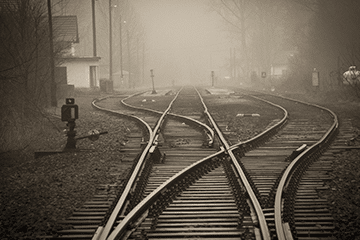The contribution of rail professionals to the United Nations' Sustainable Development Goals
The changing world of work
According to Marianne Thyssen, Commissioner Employment, Social Affairs, Skills and Labour Mobility, “30 % of today’s occupations did not exist 20 years ago. People will be constantly learning new skills. […] And in the digital age, you need to update these skills almost as soon as you learn them.” For the Institute for the Future “85% of the jobs that today’s learners will be doing in 2030 haven’t been invented yet.”
Competency and qualification frameworks, the instruments of choice for human resource managers and education policy planners, have a hard time to adapt to this new world : from the moment the need for a new qualification emerges, to the moment of the first graduations, there is a minimum of four years…
The need for a Sustainable World
While the world of work is changing, the World is facing a number of challenges. To address those challenges, in 2015, United Nations Member States adopted the 2030 Agenda for Sustainable Development. At its heart are the 17 Sustainable Development Goals (SDGs), which are an urgent call for action by all countries in a global partnership.
Representing the actors of a low carbon transport system, the UIC is active on this agenda, in particular gender equality (5), industry innovation and infrastructure (9), climate action (13) and partnerships for the goals (17).
Rail Sustainability Index project
The Rail Sustainability Index (RSi) is a new tool being designed for and with the global rail community. The previously named ‘SDG Rail Index’ tool will provide the UIC members with a unique rating system and a supportive digital platform based on the Sustainable Development Goals of the United Nations to assess the performance of each railway based on a selection of Key Performance Indicators (KPIs).
The Rail Sustainability Index is designed to provide UIC members with:
* a reporting system on each individual company’s and the whole sector’s contribution to the achievement of SDGs, featuring benchmarks and best practices,
* improved access to green bonds and sustainable finance instruments.
B* y our members, for our members
All UIC members are invited to take part in this global and truly collaborative project. Launch in May 2022, members will be invited to input data reporting on their sustainability performance, receiving their first scores in Autumn 2022.
Chaired by Paolo Mazzeo of Ferrovie dello Stato, the project is steered by a project working group that helped shaped the IT development of the tool, by providing details on the specific requirements to be met. During 2021, the new tool has been fully tested and improved and is now ready to be launched in May 2022.
You can support and contribute to the RSI
Rail professionals and practices supporting SDGs
Claim your badge!
Mapping SDGs practices in the rail sector
REPAIR: an approach to building sustainable occupational frameworks
A changing world of work requires new approaches to the development of occupational frameworks, and the need for The need for a Sustainable World an opportunity to make SDGs an integral part of those frameworks. The REPAIR (innovative) approach is twofold:
- apply the lessons learned from modern mapping techniques to create lively occupational/practice/competency maps
- make the reflexion on SDGs an integral part of the process to create forward looking occupational/practice/competency maps
With this purpose in mind, we are working with the UIC Rail Index project
If we look at road maps, Google Maps and Open Street Maps have very little in common with yesterday’s paper maps. “I honestly think we’re seeing a more profound change, for map-making, than the switch from manuscript to print in the Renaissance,” University of London cartographic historian Jerry Brotton told the Sydney Morning Herald. ”That was huge. But this is bigger.” No such things could be said from the way we are building competency and qualification frameworks. If we look at competency frameworks as “competency maps” describing an occupational “territory”, the process and technologies used for establishing those maps have not changed much since the 50’s. Digital maps are being established by the collection of data provided directly by the users, their navigation systems and other sensors. It is about harnessing the crowd’s intelligence through feedback loops: the map is created/updated by using the map itself. The old process of building maps from aerial photography and drawing boards has been supplanted by the capture of real time information. The digital map is both the outcome of a process (using it) and the enabler of this process.



